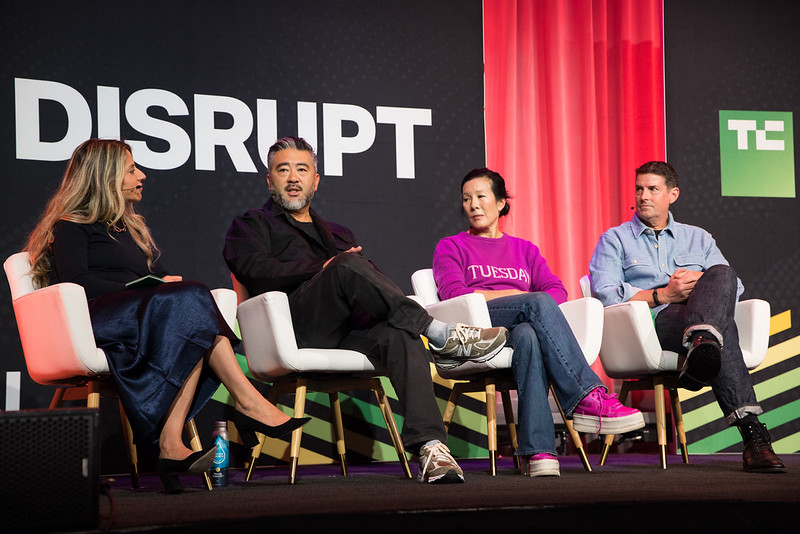
The landscape of venture capital is undergoing a profound transformation, with investors acknowledging that the artificial intelligence boom necessitates a fundamentally different approach compared to previous technological shifts. This period, characterized by unprecedented innovation and rapid market shifts, has been aptly described as a "funky time" by industry veterans, signaling a departure from long-established investment heuristics. As AI startups demonstrate an astonishing capacity to scale from nascent stages to significant revenue figures in remarkably short periods, venture capitalists are recalibrating their evaluative frameworks to identify enduring success in this dynamic arena.
A Shifting Investment Paradigm
The current surge in AI development, particularly in generative AI and large language models (LLMs), marks a distinct era in technological advancement. Unlike the internet boom of the late 1990s or the mobile revolution of the 2000s, AI’s foundational nature promises to reshape nearly every industry, from healthcare to finance, manufacturing to creative arts. This pervasive potential is a key driver for investor interest, yet it also introduces unique challenges. Aileen Lee, founder and managing partner of Cowboy Ventures, articulated this sentiment at TechCrunch Disrupt 2025, observing that the traditional "rules of investing" have been significantly altered. Her firm has witnessed AI companies achieving "zero to $100 million in revenue in a single year," a pace that was virtually unimaginable in prior tech cycles, compelling investors to rethink their timelines for growth and profitability.
Historically, venture capital operated on a relatively predictable timeline: seed funding for ideation, Series A for product-market fit and initial traction, Series B for scaling, and so forth. Each stage had its established benchmarks for revenue, user growth, and team size. However, the unique characteristics of AI, such as its dependence on vast datasets, intensive computational power, and the rapid evolution of underlying models, disrupt these conventional milestones. The sheer speed at which AI capabilities are advancing means that what constitutes a competitive edge today might be commoditized tomorrow, forcing investors to look beyond superficial metrics.
Beyond Rapid Revenue: New Metrics for Success
While explosive revenue growth is undeniably attractive, venture capitalists are now scrutinizing a more complex set of variables when evaluating AI startups for Series A funding. Lee emphasized that investors are employing an "algorithm with different variables and different coefficients," implying a multi-faceted assessment tailored to the specific nature of each AI venture. This sophisticated evaluation matrix moves beyond simple top-line figures to delve into the intrinsic value and long-term defensibility of an AI company.
Among the critical factors investors now measure is a startup’s ability to generate and leverage proprietary data. In the age of AI, data is not merely an input; it is often the output that creates a virtuous cycle, enhancing product performance and user engagement. Companies that can collect, curate, and utilize unique datasets effectively build a significant barrier to entry for competitors. The strength of its competitive moat also holds paramount importance. This can manifest through unique intellectual property, exclusive data access, network effects, or highly specialized talent that is difficult to replicate. Founders’ past accomplishments and the technical depth of the product are also under intense scrutiny. Given the complexity and cutting-edge nature of AI, a founding team with a proven track record in relevant fields—be it research, engineering, or specific industry applications—inspires greater confidence. Similarly, a product demonstrating profound technical sophistication, rather than merely superficial AI integration, suggests a higher potential for sustained innovation and market leadership. The interplay of these factors means that "depending on what your company is, the output of the algorithmic formula is going to be different," according to Lee, highlighting the bespoke nature of current AI investment decisions.
The Evolving Scrutiny on Early-Stage Ventures
This heightened level of scrutiny is not reserved solely for later-stage funding rounds. Jon McNeill, co-founder and CEO of startup creation firm DVx Ventures, highlighted a significant shift: even startups that achieve rapid initial growth, perhaps reaching $5 million in revenue from inception, frequently encounter difficulties securing subsequent funding. "I think this game has changed, and it is changing dynamically," McNeill stated, underscoring the fluidity of the current investment environment.
Historically, seed-stage funding rounds were often more speculative, focusing on team, idea, and a nascent product. Series A was the point at which robust validation, often through demonstrable revenue and user metrics, became crucial. However, McNeill noted that Series A investors are now applying the same rigorous standards to seed-stage startups that they previously reserved for more mature companies. This earlier demand for concrete evidence of market viability and a sustainable business model reflects a broader trend of investor caution following a period of exuberant valuations in prior tech cycles. The complexity and capital intensity associated with developing and deploying advanced AI solutions further contribute to this stringent evaluation. Investors are looking for early signals of not just technical prowess but also commercial acumen, ensuring that nascent AI companies are building solutions that truly address market needs and possess a clear path to monetization and defensibility.
The Tech vs. Go-to-Market Debate
A perennial debate in the startup world—the relative importance of groundbreaking technology versus a superior go-to-market (GTM) strategy—has gained new prominence in the AI investment landscape. Jon McNeill ignited this discussion by suggesting that "a lot of investors have figured out that the breakout companies, in most cases, don’t have the best tech. They have the best go-to market." This perspective emphasizes the critical role of effectively attracting and retaining customers, arguing that even a technically brilliant product can fail if it doesn’t reach its intended audience or articulate its value proposition compellingly.
However, this assertion met with a counterpoint from Steve Jang, founder and managing partner of Kindred Ventures. Jang contended, "I don’t think it’s 100% true to say mediocre technology, great GTM wins and raises money and gets customers. I think that it’s a necessary requirement to have both." Jang’s view underscores the belief that while marketing and sales are vital, they cannot compensate indefinitely for fundamental technological weaknesses, particularly in a field as sophisticated as AI. McNeill later clarified his stance, acknowledging the importance of a solid product but reiterating the imperative for founders to develop an exceptionally strong sales and marketing strategy from the outset. He observed that "investors are getting much more sophisticated on the go-to market than they have in the past," indicating a shift where GTM is no longer an afterthought but a foundational element assessed early in a startup’s lifecycle. This debate highlights a crucial lesson: in an increasingly crowded and competitive AI market, a breakthrough innovation alone is often insufficient; it must be coupled with an equally innovative and aggressive strategy to capture and retain market share. The cautionary tale of startups gaining viral hype without a robust, functional product, as discussed at the conference with Roy Lee of Cluely, further illustrates the limitations of GTM without substance.
The Relentless Pace of Innovation
One of the most defining characteristics of the current AI era is the unprecedented speed of development and deployment. Aileen Lee underscored this by stating that AI startups are now under immense pressure to deliver product updates and new features at an unparalleled pace. This rapid iteration is not merely about staying competitive but about actively preempting existing companies, both incumbents and fellow startups, from introducing similar products. "If you look at how much OpenAI and Anthropic are shipping, you’re going to have to figure out how to match how much you ship, how quickly and the quality of it," she cautioned.
This "AI arms race" has significant implications for founders and investors alike. It demands agile development methodologies, substantial investment in R&D, and a culture of continuous innovation. The market’s tolerance for slow development cycles or infrequent updates has dwindled to near zero. For startups, this means not only building a robust initial product but also establishing a clear roadmap for iterative improvements and new feature releases that can keep pace with the fastest movers in the industry. The challenge is compounded by the fact that many foundational AI models are rapidly improving, requiring application-layer startups to constantly adapt and integrate the latest advancements. This relentless pace also contributes to the heightened scrutiny from investors, who need assurance that a startup can maintain its technical edge and product velocity in such a dynamic environment.
Navigating an Untapped Frontier
Despite the intense competition, elevated expectations, and breakneck pace of development, there is a consensus among panelists that the AI industry remains in its nascent stages. "There are no clear, outright winners, even in LLMs. There are competitors nipping at their heels," remarked Steve Jang. This perspective offers a crucial glimmer of opportunity for new entrants and nimble startups. The fluidity of the market means that the perceived leaders of today may not hold that position tomorrow, creating pathways for disruption.
This early stage implies that the market is still defining itself, with immense potential for new categories, applications, and business models to emerge. While established tech giants and well-funded incumbents are pouring resources into AI, the inherent agility and specialized focus of startups allow them to identify niche opportunities, innovate on specific problems, and move with a speed that larger organizations often struggle to match. The opportunity to unseat perceived leaders, whether they are decades-old corporations or fast-moving newcomers, remains a tangible prospect for those who can navigate the complex interplay of cutting-edge technology, strategic market penetration, and relentless execution. The investment landscape, therefore, reflects both the immense challenges and the boundless opportunities that define this truly transformative era of artificial intelligence.
In conclusion, the venture capital community’s recalibration for AI investments signifies a broader recognition of this technology’s unique demands and profound potential. The shift away from traditional metrics toward a more holistic, nuanced evaluation reflects an understanding that AI’s impact will be far-reaching and its trajectory unpredictable. As investors and founders alike navigate this "funky time," adaptability, foresight, and an unwavering commitment to both technological excellence and market execution will be paramount in shaping the future of the AI-driven world.





